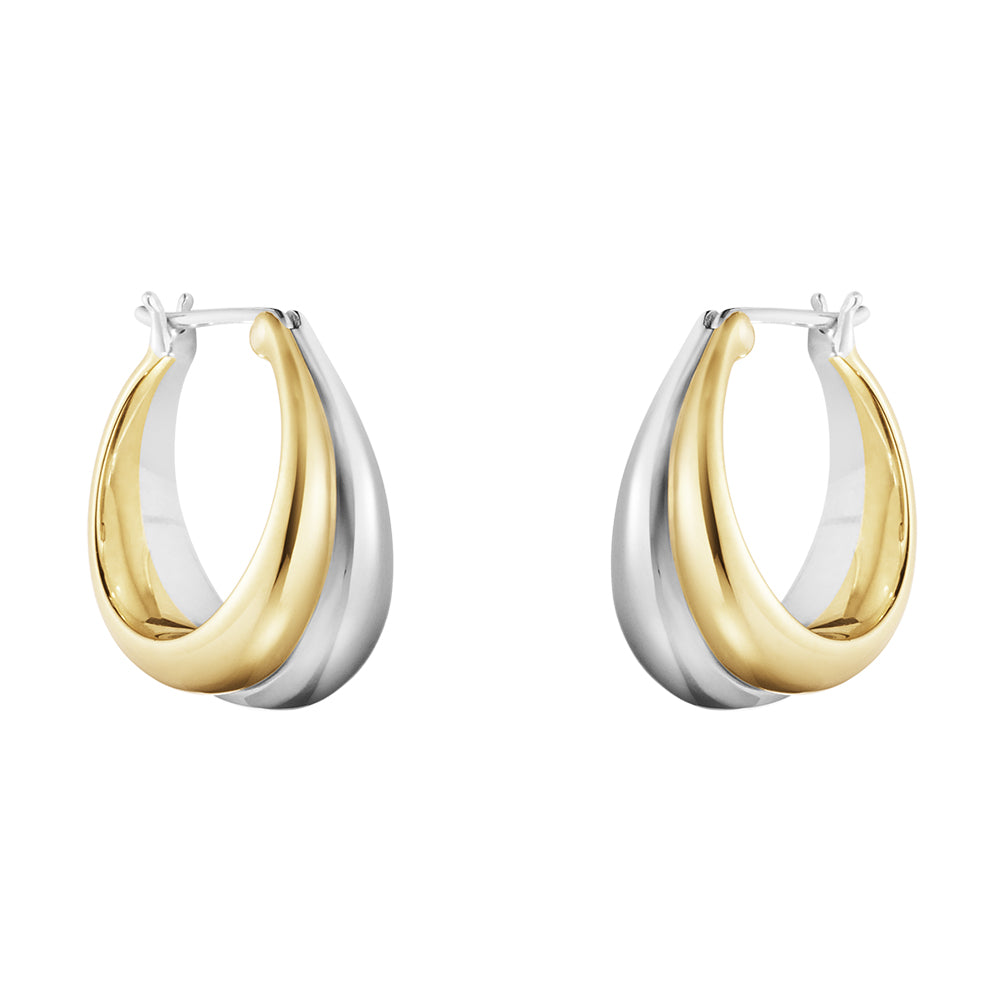
How Long Do Earrings Take to Heal? A Complete Guide
Introduction
The healing time for earrings is a delicate interplay of biology, care, and artistry. From the first shimmer of metal to full recovery, the journey is as fascinating as it is essential for healthy, beautiful piercings. Understanding this process not only helps prevent complications but also allows wearers to appreciate the intricate connection between body, jewelry, and personal expression, highlighting the true value of a well-chosen piece.

The Science Behind Earring Healing
When a piercing needle or stud passes through your earlobe or cartilage, it creates a controlled wound. Your body instantly begins a sophisticated repair sequence that unfolds in three biological stages. Each stage is orchestrated by a combination of immune response, cellular regeneration, and tissue remodeling, reflecting the body’s innate ability to restore function and protect against infection. Healing is a dynamic, multi-step process influenced by individual genetics, immune health, and the specific location of the piercing, emphasizing the importance of patience and proper aftercare.
Inflammatory Phase (Days 1–7)
Blood vessels constrict to reduce bleeding, then dilate to allow immune cells to flood the area. White blood cells destroy bacteria, while platelets form a clot around the jewelry post. During this phase, minor swelling, warmth, and tenderness are normal. The inflammatory process not only prevents infection but also lays the foundation for collagen deposition and angiogenesis, critical steps for long-term tissue stability. Applying gentle saline soaks helps maintain cleanliness without disrupting the natural immune response, supporting a healthier healing trajectory.
Proliferative Phase (Week 1–6)
Fibroblasts (cells that produce collagen) begin knitting new tissue around the earring channel. This is when a “fistula”—the epithelialized tunnel that holds your jewelry—begins to form. Capillaries regenerate, improving oxygen and nutrient supply to the healing tissue. Collagen initially formed is primarily Type III, providing a temporary scaffold that will be replaced by stronger Type I collagen during maturation. At this stage, the piercing may appear superficially healed, but the underlying tissue remains fragile, and careful handling of jewelry is essential to avoid microtears or irritation.
Maturation Phase (Weeks to Months)
The fistula strengthens and becomes less prone to tearing. However, even at this stage, premature jewelry removal can cause the piercing to close or weaken. Cartilage piercings require longer maturation due to their limited blood supply, often taking 12–18 months to fully remodel. During maturation, collagen fibers realign along stress lines, increasing tensile strength, and subtle lymphatic drainage continues to reduce localized inflammation. Recognizing that the external appearance does not always reflect internal readiness can prevent complications and ensure long-term piercing stability.
According to the Association of Professional Piercers (APP), typical healing times are:
Earlobes: 6–8 weeks
Cartilage: 6 months to 1 yea
These timelines are averages; individual variation is significant, influenced by factors such as immune system efficiency, lifestyle, and jewelry quality.

Factors That Affect Healing Time
Piercing Location
The most significant factor is vascularity—the blood supply to the tissue. Earlobes heal faster because they are rich in soft tissue and blood vessels, promoting efficient delivery of oxygen, nutrients, and immune cells. Cartilage piercings, such as helix, tragus, or conch, have slower blood flow, meaning less nutrient delivery and slower repair. Moreover, mechanical stress, pressure from sleeping positions, and accidental tugging can further delay cartilage healing, making adherence to careful aftercare protocols particularly important.
Jewelry Material
Low-reactivity metals shorten healing by reducing allergic inflammation and irritation. Best choices include implant-grade titanium (ASTM F-136), 14k–18k solid gold, and niobium. Avoid nickel-containing alloys, which can provoke allergic contact dermatitis. The American Academy of Dermatology (AAD) notes that nickel allergy affects up to 18% of the population.
High-quality metals not only reduce inflammatory complications but also support smoother epithelialization and lower the risk of hypertrophic scarring or keloid formation. Investing in proper jewelry is both a health and style consideration.
Aftercare Routine
Cleaning too aggressively can delay healing by irritating tissue. The APP recommends:
Twice-daily saline rinse (0.9% sterile saline solution)
No rotation of jewelry — a common myth that re-tears tissue
Additional tips include using cotton swabs with care to avoid pushing debris deeper into the fistula and gently patting the area dry rather than rubbing. Consistency in a mild, non-invasive cleaning routine encourages rapid and complication-free healing.
Age and Health
Children’s earlobes often heal faster due to robust collagen production, but they are also more prone to touching piercings, increasing infection risk. People with conditions like diabetes, autoimmune disorders, or those on immunosuppressants may require double the healing time, as systemic factors reduce cell regeneration and impair vascular responses. Lifestyle factors, such as diet, sleep quality, and hydration, also play subtle but meaningful roles in tissue repair.

Little-Known Healing Insights
Seasonal Healing
Dermatological studies show wounds often heal faster in summer due to increased circulation and vitamin D synthesis—but only if piercings are protected from sweat and bacterial contamination. In colder months, reduced peripheral circulation may slow repair, making careful attention to warmth, hygiene, and moisture balance essential.
Ear Microbiome
Your skin hosts beneficial bacteria that help regulate immune responses. Using harsh antiseptics daily can destroy this balance, slowing epithelialization. A study in Nature Microbiology found that diverse skin microbiota improve healing outcomes. Maintaining a natural microbial environment through gentle cleaning can enhance tissue regeneration and reduce infection risk.
The “Silent Setback” of Microtears
Even after an earlobe looks healed, microtears from tugging (like catching an earring in clothing or hair) can reset healing progress. These often go unnoticed until redness, soreness, or slight swelling appears days later. Awareness of microtrauma sources and protective strategies, such as using silicone sleeping discs or being mindful of accessories, helps prevent these subtle disruptions.

Realistic Healing Timelines

These are minimum times. Your piercing might look fine sooner, but internal healing continues long after surface redness disappears. Recognizing the difference between superficial appearance and tissue maturity prevents premature jewelry changes and long-term complications.
Scene from a Healing Journey
Picture this:
It’s a crisp autumn afternoon, and Claire walks out of a professional piercing studio, the tiny sparkle of titanium catching the light. For the first week, she’s meticulous—morning saline soaks, no twisting, sleeping on the opposite side. By week three, it looks perfect. Friends compliment her. She feels tempted to swap for a statement hoop—but she resists, remembering her piercer’s words:
“The outside heals before the inside. Wait until both are ready.”
That patience rewards her with a flawless, infection-free piercing that lasts decades. In real-world terms, this illustrates how both diligence and respect for biological timelines significantly enhance long-term earring wearability and comfort.

Myths Debunked
“Rotate your earrings to prevent sticking.” False. Rotation can tear healing tissue.
“Alcohol cleans best.” False. Alcohol dries tissue and delays cell regeneration.
“It’s healed once it looks fine.” False. Surface healing can be deceptive—internal healing takes much longer.
Understanding these myths is critical for educating new piercers and wearers, emphasizing the importance of science-based guidance rather than anecdotal advice
Complications That Can Delay Healing
Infection: Redness, swelling, pus—usually caused by touching with unwashed hands.
Hypertrophic scarring: Small, raised tissue bumps around the piercing.
Keloids: More common in individuals with a family history of abnormal scarring.
Allergic reaction: Itchiness and rash from nickel or poor-quality plating.
The Mayo Clinic emphasizes early intervention for infection to avoid prolonged recovery. Timely professional consultation can prevent minor irritations from evolving into chronic complications.

Advanced Healing Tips
Travel with sterile saline spray: essential for flights where dehydration slows healing.
Silicone sleeping discs: protect piercings from pressure during sleep.
Avoid swimming in lakes or pools for at least 6 weeks—chlorinated or stagnant water can introduce pathogens.
Watch for subtle signs of irritation—persistent dryness or shininess around the site can indicate over-cleaning.
Additional strategies include adjusting sleep positions, using breathable pillowcases, and keeping hair away from the piercing, which collectively contribute to faster, safer recovery.

The Emotional and Cultural Side of Piercing Healing
Healing a piercing isn’t just biological—it’s cultural and personal. In parts of India, ear piercing ceremonies (Karnavedha) mark spiritual and social transitions, with traditional aftercare involving herbal oils. In Western fashion, a healed piercing is a canvas for self-expression, and the patience it demands mirrors the value placed on enduring style. Recognizing the social and psychological aspects of healing enhances appreciation for the jewelry itself, connecting aesthetic enjoyment with personal growth.
Rare but Fascinating Scientific Facts About Piercing Healing
Collagen type ratio shift: Early healing involves Type III collagen, which is later replaced by stronger Type I collagen—a process that can take up to a year.
Oxygen’s role: Hyperbaric oxygen therapy (HBOT) has been studied for improving healing in slow-healing wounds, although rarely used for piercings.
Lymphatic response: Mild fluid secretion in early healing is part of the body’s lymphatic drainage and not always infection.
These facts illustrate the intricate interplay between cellular biology and mechanical factors, reinforcing why patience and proper aftercare are essential.

Long-Term Care for Pierced Ears
Even after the official healing period, pierced ears require maintenance:
Remove earrings occasionally to clean both the jewelry and piercing channel.
Use mild, non-perfumed soap to avoid residue buildup.
Choose earrings with secure but gentle backs to prevent accidental tears.
A well-maintained piercing can remain healthy for decades, becoming a permanent part of one’s personal style story. Regular inspection for subtle changes in tissue texture or coloration is recommended, particularly when changing jewelry or during seasonal skin fluctuations.
The Artistic Value of Earrings Post-Healing
Once healed, earrings become more than adornment—they’re an evolving personal gallery. Fine materials age gracefully, developing a patina unique to the wearer. Designs can shift with mood and milestone, making them as much a record of life as a fashion statement. Well-crafted earrings not only enhance aesthetics but also demonstrate the wearer’s attention to health, quality, and timeless beauty.
Final Thoughts
Healing earrings requires more than time—it’s a partnership between biology, care, and patience. By respecting the body’s pace and choosing quality jewelry, you ensure your piercings remain healthy, beautiful, and enduring. Science, culture, and artistry converge in every healed piercing, underscoring the value of knowledge-informed care.

FAQ
Q1: Can I change earrings after 3 weeks if my earlobes look fine?
A: No. The internal tissue isn’t fully healed. Wait at least 6–8 weeks for earlobes, longer for cartilage.
Q2: Do children’s ears heal faster than adults’?
A: Often yes, but kids are more prone to infection from touching piercings.
Q3: Can I speed up healing with supplements?
A: Vitamin C and zinc support collagen production, but no supplement replaces proper aftercare.
Q4: My piercing feels sore after months—is this normal?
A: Mild soreness can occur if the jewelry is bumped, but persistent pain needs a piercer or medical check.
Q5: Is it safe to sleep on new piercings?
A: It’s best to avoid direct pressure during healing. Use a travel pillow for cartilage piercings.
Q6: Why does my healed piercing still get crust sometimes?
A: Occasional lymph secretion is normal, especially in the first year, but it should be minimal and clear.
Q7: Can weather changes affect my piercing?
A: Yes, cold can cause mild contraction and tightness; warm, humid weather can increase sweat-related irritation.

Call to Action
Whether your next piercing is a classic stud or a bold hoop, remember: healing is an art as much as it is a science. Choose certified piercers, invest in quality earrings, and honor your body’s timeline—so every sparkle you wear tells a story worth keeping. Proper care ensures longevity, health, and aesthetic pleasure, transforming earrings from mere accessories into enduring personal statements.








